Build Design Systems With Penpot Components
Penpot's new component system for building scalable design systems, emphasizing designer-developer collaboration.

medium bookmark / Raindrop.io |
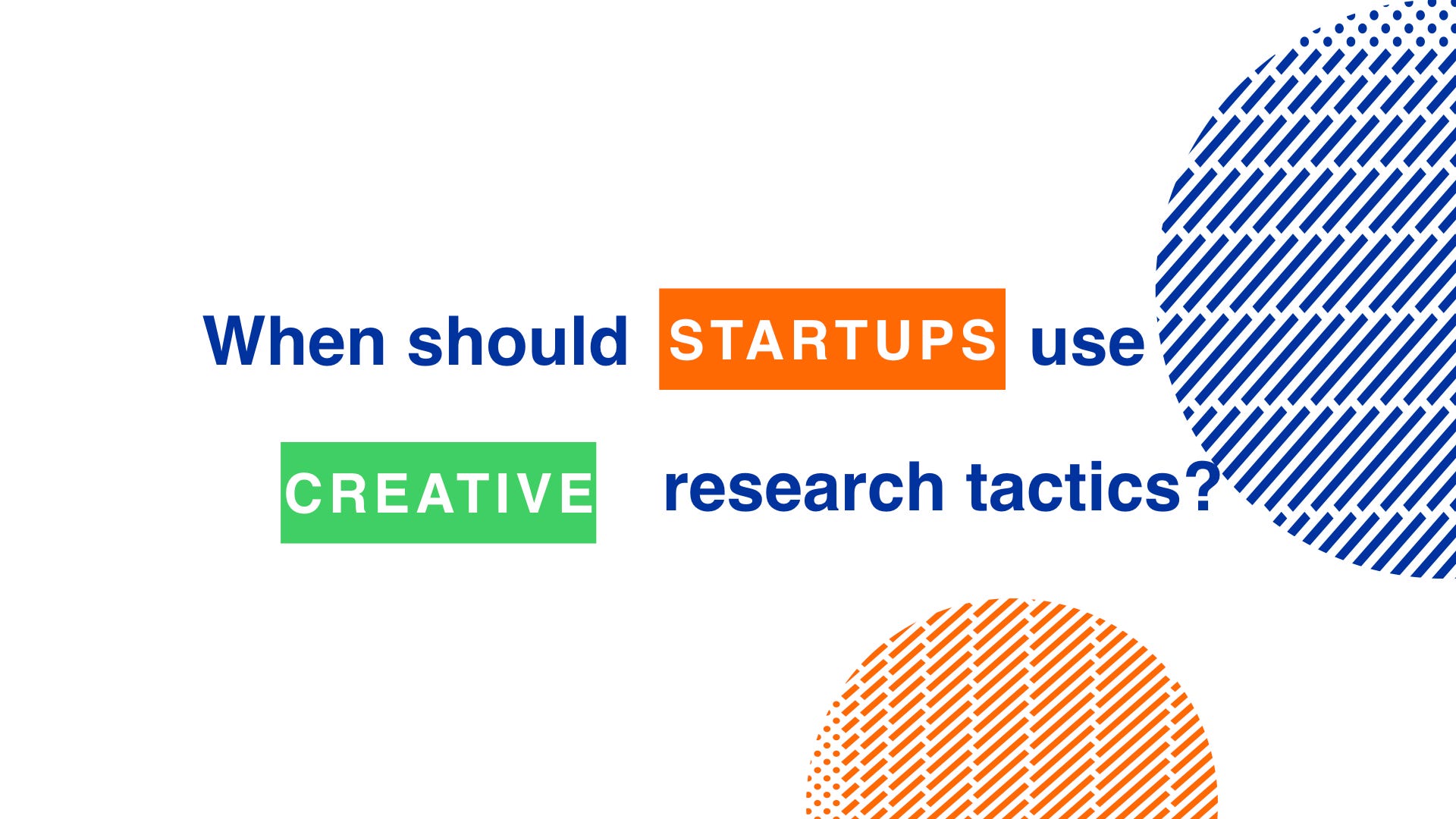
By Jill Christ and Nicole Chen
Thoughtful user research is an essential tool for guiding product direction, testing hunches, and uncovering needs and opportunities we couldn’t anticipate from our office desks. It can be particularly invaluable for startups, which often need to move quickly despite an uncertain product-market fit and other ambiguities. Research can help answer early-stage questions, such as “Who are we building for?” and “What problem are we solving for them?” — as well as later questions like “Will this work in other markets?”, and “What will users want next?”

Unfortunately, few startups have the resources necessary to maintain a thorough user research program using conventional methods. The good news: it’s possible to maintain a strong user signal throughout the product lifecycle if you’re willing to get creative.
At Facebook, we love to celebrate creativity in research — particularly in fast-paced, innovation-driven settings. So a few of us Facebook researchers jumped at the opportunity to work with startups at Startup Garage Paris in November 2017 to talk about how to get creative with user research within a startup environment. We discussed just how useful it can be to find new ways to quickly get nuanced insights into the motivations and behaviors of the people you’re designing for. Now we’d like to share those insights with the broader startup community.
We aren’t suggesting that creative research methods completely replace traditional ones. But creative approaches can be very practical for smaller businesses that need a quick turnaround despite limited resources. These lessons should also be useful for any fast-paced organization that needs to learn quickly as they build. We’re no exception — Facebook and Instagram are always looking for new ways to get better research results.
What follows are four typical startup research goals, followed by a creative approach that can help you meet each one, including a real-life example from Facebook or Instagram. Take a look and think about whether, and how, you might apply these approaches to your startup or fast-paced business.
When developing a new product, organizations commonly have new users try it out and then simply ask them, “What do you think?” or “What’s your first impression?” But people usually aren’t very good at articulating how they feel when using a new product, leading to results that aren’t actionable. You may get a lengthy spiel, a not-so-useful generalized comparison to other products, or, if you’re talking to a user who’s already very familiar with your industry, some technical jargon.
So how do you get honed, nuanced answers and uncover real emotions and motivations that you can act on? One way is to use metaphors, which can help ground people’s impressions in a tangible, easily relatable way.
Here’s what this approach might look like:
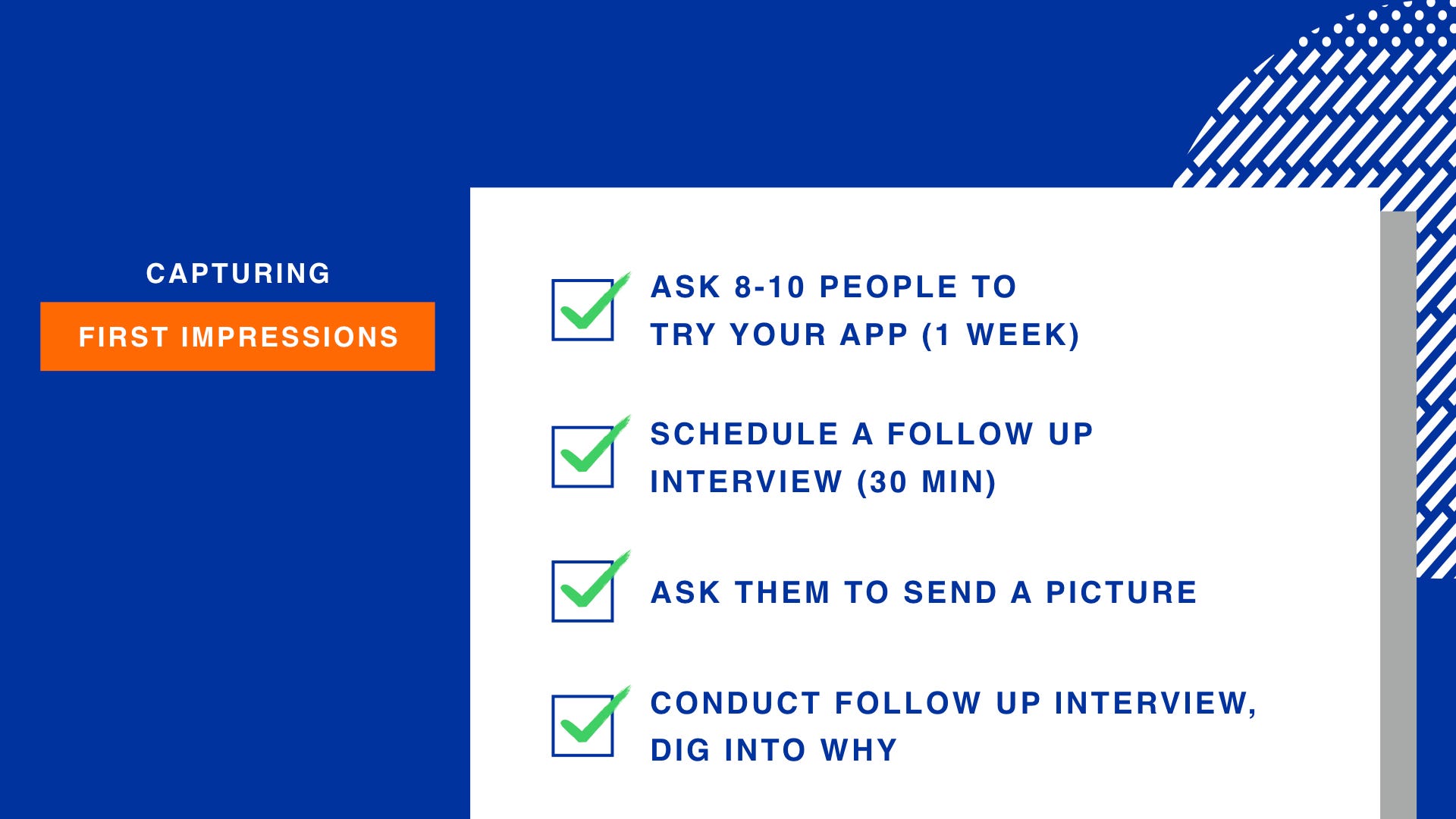
The power of using this metaphor approach is that it encourages people to think more deeply about their experience and to hone their responses around a certain theme. Also, actually “seeing” a user’s experience with your product forces you and your team to really engage with the feedback, which can help you rethink problems and take action, rather than rationalizing away survey results or interview data.
A couple of years ago, some researchers at Facebook used this approach. They’d learned in interviews and surveys that a particular product experience was confusing and hard to use, but the product team seemed to be stuck and wasn’t taking action on the findings. When the team saw the images participants chose — such as a maze and a person hiking uphill — the problems finally hit home. The experience inspired an entire redesign of one of our ads products to make it simpler and easier to use.
Users often interact with your product in ways you hadn’t planned. Understanding why they do this can help you encourage the types of usage you want, discourage the ones you don’t, and fine-tune your product for unexpected use cases. A common approach in this situation is to run a survey that asks them about their use. But people can’t always recapture their experience accurately, or even remember everything they use an app for.
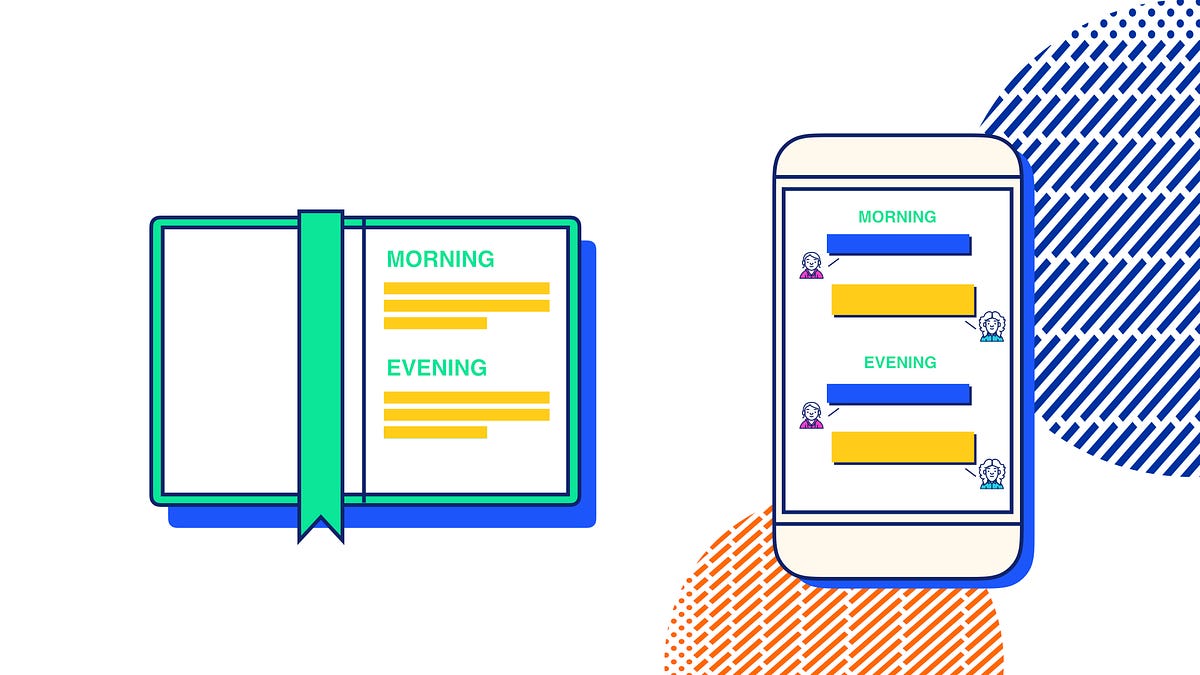
So how do you get actionable information about how they’re really using your product? Diary studies are a good way to do this, because they look at behaviors more promptly and regularly. However, the cadence in which these studies ask people to record their usage — often once per day — doesn’t always yield useful results. If you want more details about a user moment, you have to rely on their memory of what happened and why.
One creative way to get fresher, more accurate insights is to conduct your diary study via a messaging platform, like Messenger. Here’s how it might work:
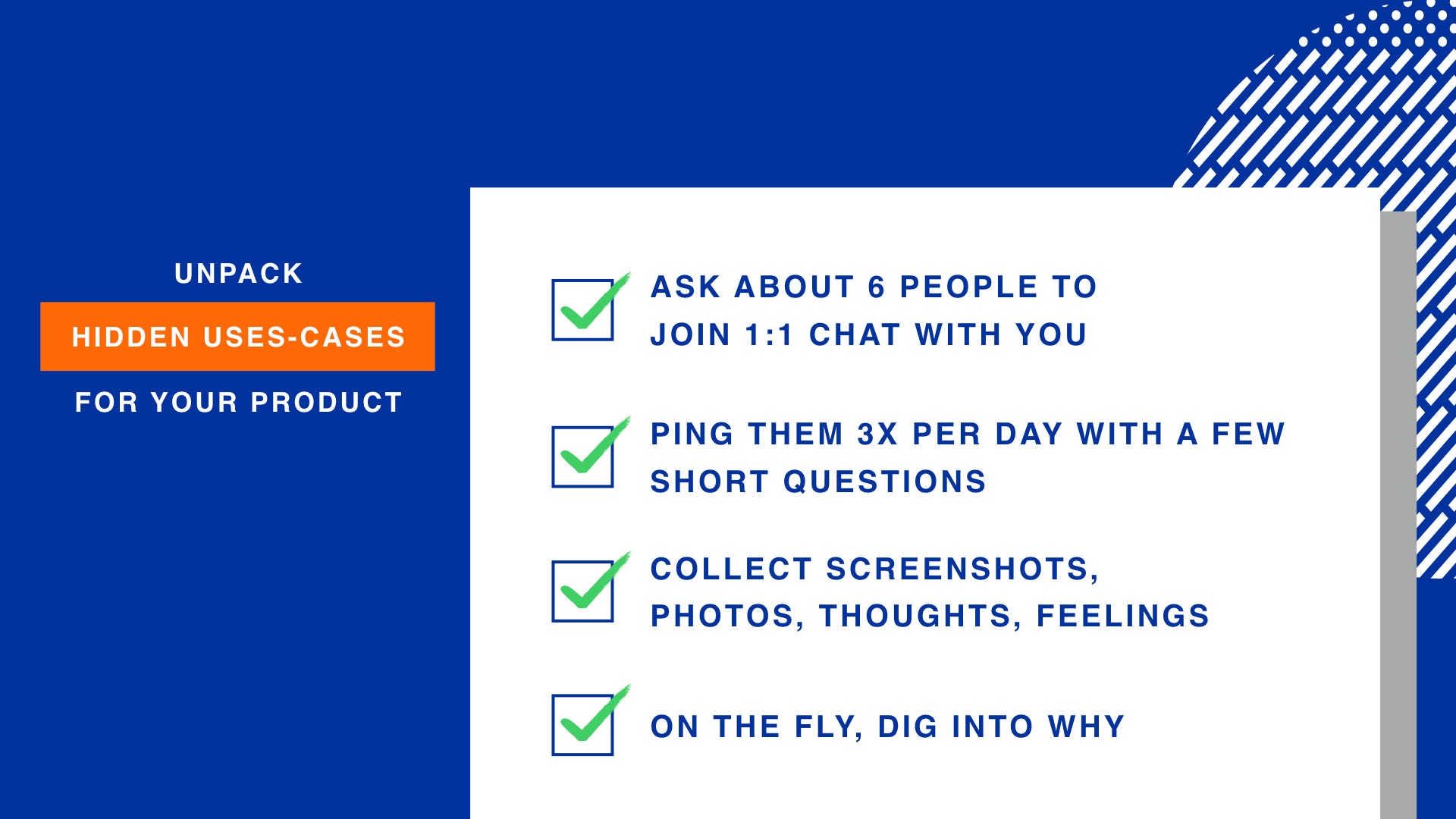
Doing diary studies this way lets you capture useful insights before the user forgets why they’d written something, or the finer details of their experience. It also helps you establish a more personal rapport with the person interacting with your product, inviting more candid and open feedback. It’s also a great way to do research on a budget, and to talk to users remotely, even in different markets.
It’s hard enough for you to predict what’s coming next in your industry — and you’re the expert! Getting useful information from your users about what they want next from your product can be even more challenging. Creative research can help to get people thinking outside of their current world view and to articulate their unmet needs.
So how can you get signal into this ever-elusive question? Here are two creative approaches:

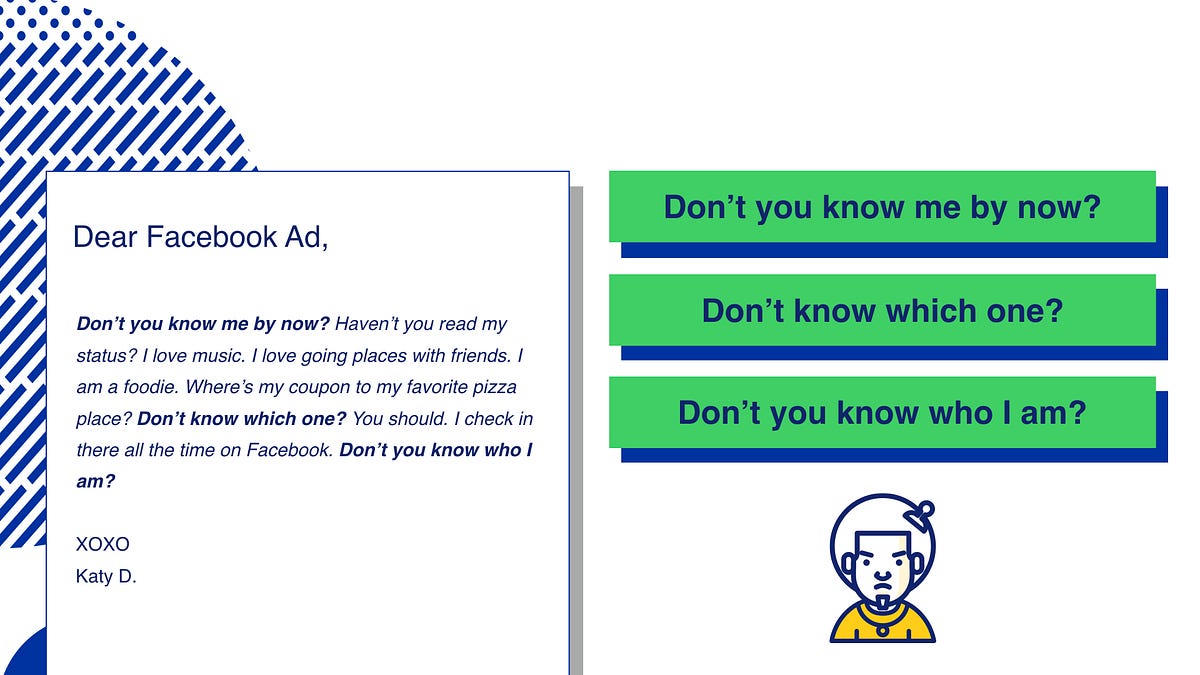
Combined with conventional methods like surveys and interviews, unexpected approaches like these can shake loose some valuable insights. Consider doing something similar for your business when thinking about what product or feature to develop next.
In today’s global marketplace, you have the potential to convert customers everywhere. But it can be very difficult to determine which markets are best to focus on — let alone what adaptations local nuances may require. The complexity of this challenge makes thorough research critical. You need an approach that allows you to quickly gather both a depth and breadth of insights.
One creative way to get a more complete understanding of what’s happening in a particular market is to combine different research methods. Here’s how one Facebook team used a “mixed method” approach to research how small businesses in Brazil paid for Facebook ads. In this case, the methodologies themselves were fairly traditional, but the combination was creative — and highly effective.
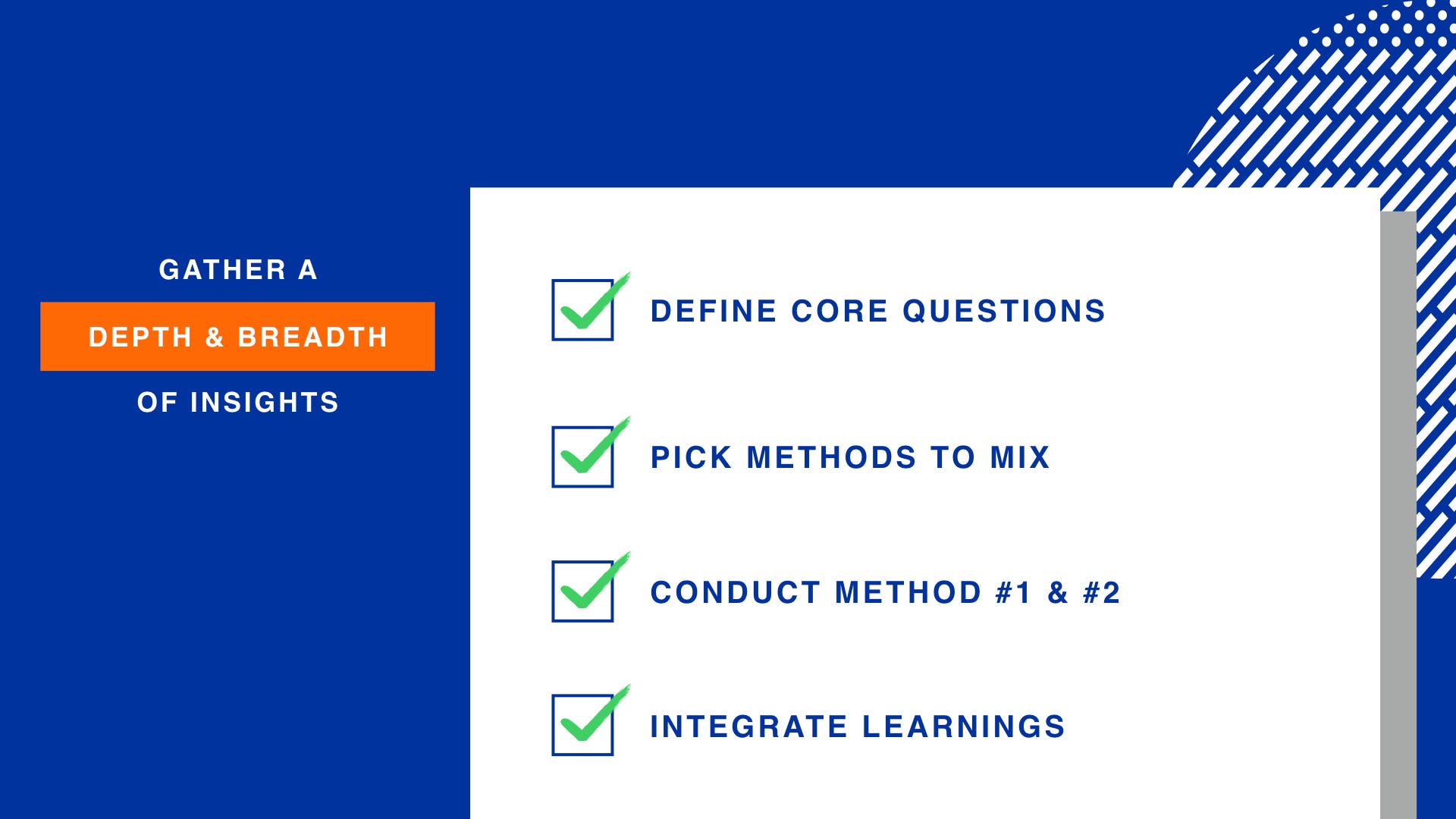
All these creative research methods can be used throughout your product’s lifecycle to quickly and continuously learn from your users and keep innovating. We hope you find them helpful for your business. Please note that they represent only a small sampling of the universe of ways to do research a little differently. So let your creative juices flow! We’d love to hear about unconventional research methods you’ve tried or considered.
AI-driven updates, curated by humans and hand-edited for the Prototypr community